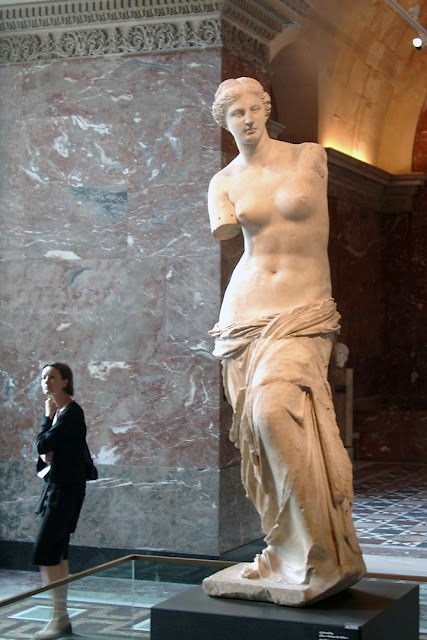Wednesday, October 8, 2003
Vénus de Milo
Vénus de Milo (Venus de Milo) by Alexandros of Antioch
Musée du Louvre
Rue de Rivoli
Quartier Saint-Germain-l'Auxerrois, 1st arrondissement
Paris, July 2002
“The Venus de Milo (Greek: Αφροδίτη της Μήλου, romanized: Afrodíti tis Mílou) is an ancient Greek sculpture that was created during the Hellenistic period, sometime between 150 and 125 BC. It is one of the most famous works of ancient Greek sculpture, having been prominently displayed at the Louvre Museum since shortly after the statue was rediscovered on the island of Milos, Greece, in 1820. The Venus de Milo is believed to depict Aphrodite, the Greek goddess of love, whose Roman counterpart was Venus. The sculpture is sometimes called the Aphrodite de Milos, due to the imprecision of naming the Greek sculpture after a Roman deity (Venus).[2] Some scholars theorize that the statue actually represents the sea-goddess Amphitrite, who was venerated on the island in which the statue was found. The work was originally attributed to the 4th century Athenian sculptor Praxiteles, but, based upon an inscription on its plinth, it is now widely agreed that the statue was created later, and instead is the work of Alexandros of Antioch. Made of Parian marble, the statue is larger than life size, standing 204 cm (6 ft 8 in) high. The statue is missing both arms, with part of one arm, as well as the original plinth, being lost after the statue's rediscovery.” (Venus de Milo, Wikipedia)
Subscribe to:
Post Comments (Atom)


No comments:
Post a Comment